Luhansk
Luhansk [Луганськ; Luhans'k]. See Google Map, see EU map: V-20, DB Map: DBII-6. A city (2020 pop 401,300) at the confluence of the Luhanka River and the Vilkhivka River. Greater Luhansk (Luhansk Council) also includes the city of Oleksandrivsk (6,400), the town of Katerynivka (16,400), and 3,000 rural residents for a total of 427,000. In 1935–58 and from 1970 until May 1990 it was called Voroshylovhrad (in honour of Kliment Voroshilov). It was the capital of Luhansk oblast (or Voroshylovhrad oblast) until April 2014, when it was captured by the Russia-supported separatists to become the capital of their self-proclaimed ‘Luhansk People’s Republic’ (LPR). As a major industrial center of Ukraine, Luhansk was a focus of railways and highways, but was severed from the rest of Ukraine in 2014 by warfare with an active front to the north of the city along the Donets River. It also had an airport 8 km south of the city limits, destroyed in a fierce 146 day battle (April-September 2014) for its control.
History. Luhansk started as the Luhansk Factory in 1797, after the Russian imperial government commissioned (in 1795) Charles Gascoigne, a British industrialist, to build a cannon foundry and ammunition factory for the Black Sea Fleet there. The technical personnel were British; the craftsmen were Russian, drafted from Lipetsk and Petrozavodsk, who settled upstream at Kamianyi Brid. During the Napoleonic Wars the plant was greatly expanded, and the Russian worker population increased. This state enterprise stimulated the development of mining in the Donets Basin. In turn, the Crimean War stimulated the foundry output. By 1880 the Luhansk village with its adjacent factory grew into a large industrial center linked by railway to the Dnipro Industrial Region and the ports of the Sea of Azov. In 1882 Luhansk Factory annexed the adjoining Kamianyi Brid, was re-named Luhansk, received city status and took over county administration from Slovianoserbsk. In 1896 the German industrialist and financier, Gustav Hartmann, established the largest steam engine locomotive plant in the Russian Empire there. By 1905 the plant was building 21 percent of the steam engine locomotives produced in the empire. The city’s population grew from 20,400 in 1897 to 34,000 in 1904 and 68,000 in 1914. Much of its population (68.2 percent in 1897) was composed of Russians.
On the eve of Ukraine’s struggle for independence (1917–20) there were at one time or another either Ukrainian or Bolshevik forces stationed in the city. In April 1918 Luhansk was occupied by German-Austrian forces and in May 1919 by the Volunteer Army of General Anton Denikin. Then it changed hands several times before it was taken by the Red Army in January 1920.
Under the Soviet regime the city recovered (72,000 in 1926) and then grew rapidly in the interwar period (212,000 in 1939). In 1938 it became the administrative center of its new, eponymous oblast. The ethnic composition of Luhansk also changed. Initially, there was an influx of Ukrainians from the countryside to the city, raising their share from 19.1 percent in 1897 to 43.5 percent in 1926. The Jewish component also increased from 7.1 percent to 10.0 percent. By 1939 Ukrainians gained a clear majority of 58.7 percent, in part because of the influx of refugees from the Holodomor in the countryside, while Russians declined to 34.5 percent, and Jews to 4.5 percent. In March 1942 the Soviet government organized a grandiose Taras Shevchenko concert in the city to rally Ukrainians to fight off the invading Nazi German army. In the ensuing battles many perished.
After the Second World War destruction and postwar reconstruction, the population of Luhansk recovered and continued to grow (275,000 in 1959, 383,000 in 1970, 463,000 in 1979), peaking at 509,000 in 1987, when its economy stagnated. There was also a change in the ethnic make-up of the population: Russians and others brought in for reconstruction and continued industrialization diluted the Ukrainian share to 48.3 percent in 1959 and 41.8 percent in 1989 while increasing the share of Russians to 47.1 percent in 1959 and to a majority of 52.4 percent in 1989. With Ukraine’s independence this trend was reversed: by 2001 the share of Ukrainians rose to 50.0 percent (increasingly Russian-speaking) while that of Russians declined to 47.0 percent.
In post-Soviet Ukraine the population of Luhansk, due to its stagnant rustbelt economy and ageing population, began to decline (505,000 in 1992, 463,000 in 2001, 438,000 in 2009, and 424,000 in 2014). Even so it remained an important railway and highway junction and a major industrial, administrative, commercial and cultural center. The war in 2014 impacted the city politically, economically and demographically, the population declining to 401,300 in 2020.
Economy. Luhansk was a major metallurgical and machine-building center in Ukraine. Its most important industries were machine building and metalworking. In 2010 the shares of industrial output by value, for the four most important branches in Luhansk, were as follows: machine building, 37 percent; smelting and metal-working, 29 percent; food processing, 19 percent; and mining, 4 percent. The leading machine building plants included: the Luhansk Locomotive Works (the largest in eastern Europe, accounting for 35 percent of machine building in Luhansk; it remained state-owned in Ukraine, but after its takeover by the LPR in 2014, its corporate office was moved to Moscow); the Luhansk Machine-Building factory specializing in rubber and plastic parts, electric equipment and railway gears; the Luhansk Motor Vehicle Assembly Plant (declared bankrupt in 2001); a crankshaft factory; a combustion-engine parts factory; the Luhansk Coal Mining Machine-Building Plant; two agricultural machinery plants, one producing parts for tractors and the other grain-cleaning and calibrating equipment. There were three smelting and metal-fabricating plants, including a tube-rolling mill. There were also factories making glass and ceramics, paper and carton products, and pharmaceuticals. The strategic state-owned Luhansk Ammunitions Plant, taken in 2014, had its equipment stripped and taken to the Russian Federation.
Food processing plants included flour milling, meat packing, dairy and confectionery, their production complicated since 2014 by no access to traditional suppliers under Ukrainian control. The light industry manufactured goods such as fine fabrics, footwear, knitwear, and clothing. The building-materials industry produced bricks, tiles, and reinforced concrete. On the west side of the city is a limestone quarry and beyond the city limits there are several more quarries and a coal shaft. The energy to run the industries was supplied by the Luhansk Power Station (built in 1953–6) at Shchastia, now in a war zone held by the Ukrainian forces, damaged and operating at reduced capacity. Luhansk, as the rest of the LPR, now relies on electricity supplied from the Russian Federation.
Culture. Until 2014 Luhansk was a major center of learning and culture in Ukraine. It had 40 research and development institutions, including branches of the National Academy of Sciences of Ukraine: the Institute of Labor and Employment, and the Institute of Industrial Economics; and of the National Academy of Agrarian Sciences of Ukraine: its Soil Erosion Control Laboratory. The city’s educational system in 2010 included 23 institutions of higher learning, including 5 universities and 18 professional-technical colleges. Hostilities in 2014 disrupted education, damaged facilities, and forced some members of the institutions to relocate to the Ukraine-controlled area. The oldest, the Eastern Ukrainian National University (formerly, the Luhansk Machine-building Institute, the largest in the former USSR, founded in 1920, upgraded to the national university status and named after the Luhansk-born Russian lexicographer, Vladimir Dahl, in 2001, with established campuses in several cities), is split since 2014 between two head offices: in the Ukraine-controlled Sievierodonetsk and in the LPR-controlled Luhansk, where it was re-named the V. Dahl Luhansk National University. The Luhansk National University (established in 1921 as a State Pedagogical Institute, named after Taras Shevchenko in 1939, upgraded to Luhansk State University in 1998 and granted the national university status in 2003), had established satellite campuses in Starobilsk in 1988, Rovenky in 1989, and Stakhanov in 2005; in 2014 the majority of its faculty, being pro-Ukrainian, relocated from Luhansk to Starobilsk, and opened new satellite campuses at Kreminna, Lysychansk, and Poltava; meanwhile in Luhansk the institution was re-named the Luhansk State Pedagogical University and the bas-relief of Shevchenko at its entrance was removed. Many faculty and students of the Luhansk National Agricultural University (formerly Luhansk Agricultural Institute, est. 1921) found refuge in 2014 at the Kharkiv National Agrarian University; by 2020 they gave rise to separate campuses at Starobilsk, Sloviansk, and Illinivka (near Kostiantynivka in Donetsk oblast). Similarly, many faculty and students of the Luhansk State Medical University, which used to host the largest number of foreign students of medicine in Ukraine, moved to Ukraine-controlled Rubizhne. The Luhansk State University of Internal Affairs named after E.O. Didorenko (established in 1993) was evacuated in 2014 and re-established (2016) in Sievierodonetsk.
In the Russian Empire the language of instruction in Luhansk was Russian. During Ukrainization in the 1920s the Ukrainian language was introduced to schools. By 1935, of the 25 schools in the city, 22 were teaching in Ukrainian. In the 1970s, Ukrainian as the language of instruction was eliminated. Upon Ukraine’s cultural revival, the first school with Ukrainian as the language of instruction in Luhansk was opened in 1991. But the process was resisted. By 2010 there were only three Ukrainian-language schools, all located in the outer perimeter of the city, serving 845 students, or 13 percent of all students in the city. The remaining 97 percent of the students were taught in Russian. Since 2014, all schools in the city reverted to Russian.
The cultural facilities of the city included the Ukrainian Academic Music and Drama Theater (relocated in 2014 to Sievierodonetsk), the Russian Academic Drama Theater, a puppet theater, the Luhansk Oblast Philharmonic Orchestra (relocated in 2014 to Sievierodonetsk), the Luhansk State Circus, the Luhansk Regional Studies Museum, the Museum of History and Culture of Luhansk, the Vladimir Dahl Museum, the Luhansk Art Museum, and the open air Ukrainian Aviation Technology Museum (on the grounds of the former air force pilots’ academy, 1930–97).
Luhansk had three television channels, several radio stations, and produced 25 newspapers and magazines. The principal newspaper is the Luhanska Pravda / Voroshylovhradska Pravda (printed since 1917, in Russian, appearing in Ukrainian only during the period of Ukrainization).
Luhansk has 6 stadiums and sports complexes. The best known is the Avangard (Vanguard) Stadium, which served as the home base for the Zoria (Star) football team (USSR champion in 1972, Ukrainian First League winner, 2005–6) until 2014, when the team left to be hosted in Zaporizhia (2014–15) or Odesa (2016–17); the remaining players formed the Luhansk People’s Republic national football team (not affiliated with FIFA or UEFA).
City plan. Greater Luhansk (aka Luhansk Council) is divided into four administrative (city raion) sections: Lenin, October, Artem, and Kamianyi Brid. On a map, it forms a star-like shape of protruding rectangles, with maximum dimensions of about 25 km from east to west and 25 km from north to south, covering an area of 286 sq km. The built-up urban area is more compact, occupying about 100 sq km. The outlier to the west is the city of Oleksandrivsk (part of the Artem Raion); the protrusion to the south includes the former town of Katerynivka (Artem Raion) and the former village of Vydnyi (Lenin Raion); and the extension to the northeast to Donets River contains five settlements (Velyka Verhunka, Mala Verhunka, Verhunskyi Roziizd, Chervonyi Yar, and Veselenke, all part of the October Raion). Before 2014, the city of Shchastia and adjoining Luhansk Power Station, an outlier on the north bank of the Donets River, 18 km north of the Luhansk city center, was also part of the October Raion until it was re-gained by the Ukrainian forces.
Luhansk city center (the northern part of Lenin Raion) is located on the right (south) bank of the Luhan River and on the south side of the main east-west double-tracked railway line. North of it is Kamianyi Brid Raion. North-northeast of the city center is the Luhansk Ammunitions Factory and northwest of the center is the main Luhansk passenger railway terminal. The west side of the center (bordering on the Artem Raion) is marked by the Vilkhova River, flowing north into the Luhan River and, on its east bank, a railway line flanked by factories. The east side is framed by the wide 16th Line (bordering on October Raion).
The city center was re-developed in the 1930s with the levelling of the Dormition Church and St. Nicholas’s Church, and re-built in the 1950s with broad streets and large squares with parks and monuments featuring Soviet leaders. It contains most of the administrative, cultural, institutional and commercial buildings. Since Ukraine’s independence, new churches and houses of worship were built, mainly beyond the city center. New monuments were added featuring, among others, Ukraine’s national poet Taras Shevchenko (1998, with the assistance of the Ukrainian World Congress), the Russian native lexicographer, Vladimir Dahl (2010), the Luhansk Factory founder, Charles Gascoigne (1995), memorials for the soldiers of the Afghan War (2006), the Chornobyl nuclear disaster fire liquidators (2006) and for victims of the Famine-Genocide of 1932–3 (2008) (all three encouraged by President Victor Yushchenko), and the politically divisive ‘victims of OUN-UPA’ (sponsored by the Party of Regions).
The main east-west artery crossing the city center is Radianska (Soviet) Street (formerly 5th Donetsk Street). It connects directly to Highway M-04 west to Donetsk and east-northeast to Stanychno-Luhanske (held by the Armed Forces of Ukraine). The north-south Oboronna (Defence) Street leads southeast directly to Highway M-04, past Krasnodon to Kamensk-Shakhtinskii in the Russian Federation and thence to Moscow or Rostov-na-Donu. The old city with most museums and administrative buildings lies north of Radianska Street; commercial and institutional buildings are south of it and along Oboronna Street.
A major feature of Luhansk is the central north-south line of parks, squares, and institutional buildings. It contains, beginning at the central square northward from Radianska Street: ‘Heroes of the Great Patriotic War Square,’ consisting of a park featuring a statue of Taras Shevchenko; facing it on its west side is the Luhansk Oblast Administration, now housing the LPR administration; on its north side, the former Oblast Communist Party of Ukraine Hall; north of the hall, the Theater Square with a monument of Vladimir Lenin; then north and across the Kosiubynsky Street, the Russian Academic Drama Theater; north again, a square featuring a monument to Kliment Voroshilov; then the Luhansk Regional Studies Museum (with a bust of Charles Gascoigne) and, across Taras Shevchenko Street, the Fighters of the Revolution Square park displaying two British Mark V tanks captured from the Volunteer Army of General Anton Denikin. From here, in an arc north, west and then south, is a scattering of interesting places in the old city center: the Luhansk Art Museum, the Vladimir Dahl Museum, the Kliment Voroshilov Museum, the Institute of Culture of the Luhansk National University, the Luhansk city administration buildings, and several parks, including the ‘Chervona Ploshcha’ (Red Square) park, featuring a monument to the liquidators of the Chornobyl nuclear disaster fire (erected in 2001) and the ‘Moloda Hvadiia’ (Young Guard) park (formerly, the old Luhansk cemetery, its history destroyed).
On the south side of Radianska Street, from west to east, are: across from the Young Guard park is the Central Luhansk Television Studios; then, the vast Luhansk Central market; flanking the market and directly south of the ‘Heroes of the Great Patriotic War Square’ is a long wooded esplanade with a statue to an unknown soldier of the Red Army (dying soldier with flying cranes, by sculptor E. Chumak, erected in 2000) and to the ‘victims of OUN-UPA’ (sponsored by the Party of Regions, erected in 2010); and east of the esplanade to Oboronna Street is the Oblast Children’s Hospital campus. On the southeast corner of Radianska and Oboronna is the Maxim Gorky Oblast Depository Library; east of it, ‘Park Pamiati’ (Memorial Park) with a monument for the fallen soldiers in Afghanistan (erected in 2006), a wooden church and a stone cross for the victims of the Famine-Genocide of 1932–3 (erected in 2008); south of the library is the main campus of the Luhansk National University with its park museum of many forms of stone baby. South of the university, beyond Kherson Street and on the east side of Oboronna Street is a huge sports complex consisting of the Avangard Arena, the Dynamo indoor athletic facilities, tennis courts and track and field structures; northeast of this complex is the Luhansk Circus. South of the sports complex, across the Luhanska Pravda Street, is the Luhansk Building College, and west of it, across the Oboronna Street, is where the Luhansk Academic Ukrainian Music and Drama Theater was housed (re-named Theater on Oboronna).
Beyond the city center, to the east in the October Raion, Molodizhnyi (Youth) District, is the large, modernized campus of the Eastern Ukrainian National University with a statue of Vladimir Dahl. To the south, following Oboronna Street to the former suburb of Hostra Mohyla, on its eastern periphery is the open air Ukrainian Aviation Technology Museum.
Luhansk is well endowed with parks. In addition to the smaller urban parks there are larger parks beyond the city center: the May 1 Park in the Kamianyi Brid Raion along the Komintern Street between the railway tracks and Luhan River, the Maxim Gorky Park along the Luhan River bordering the Artem and the Kamianyi Brid raions, and large wooded areas to the west and north of it; the Druzhba (Frienship) Park in the October Raion and large wooded areas around that raion and east of it; and in the southern part of Lenin Raion, south of Hostra Mohyla, the Hostra Mohyla Landscape Park (with several Soviet-era monuments to the defenders of Luhansk) and, west of it, the Luhansk Forest Preserve.
Luhansk is an important transportation hub with good urban transportation network. Its railway with 10 stations within the city limits provided both inter-city and suburban service, but since the 2014 war most intercity train service has been curtailed. Inter-city bus service to the rest of Ukraine has been complicated since 2014 by the need to by-pass the war zone through the Russian Federation. Within the city, transportation was provided by streetcars, trolley busses, and city buses. Since 2014 the street car service has been suspended due to cost.
BIBLIOGRAPHY
Istoriia mist i sil URSR: Luhans'ka oblast (Kyiv 1968)
Sloniova, T., Shcherbyna, N. ‘Voroshylovhrad,’ Heohrafichna Entsyklopediia Ukraïny, 1 (Kyiv 1989)
Lugansk: plan goroda (Kyiv 2013)
Ihor Stebelsky
[This article was updated in 2020.]

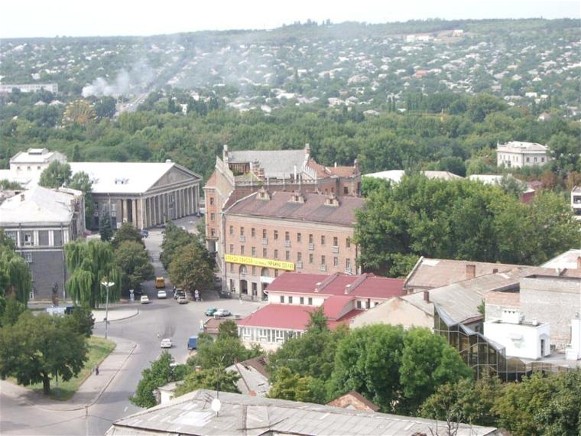
.jpg)
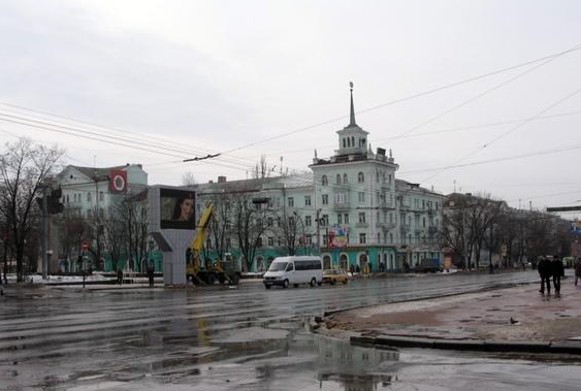
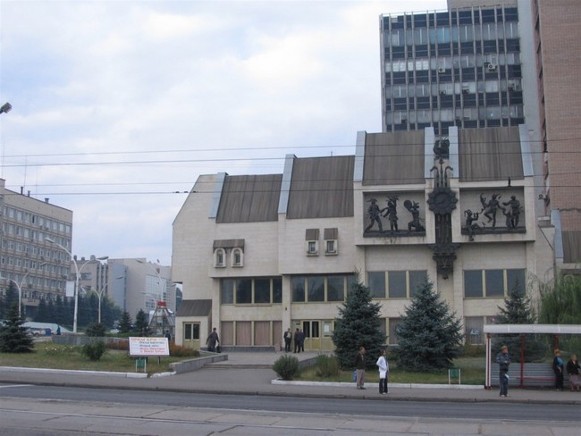
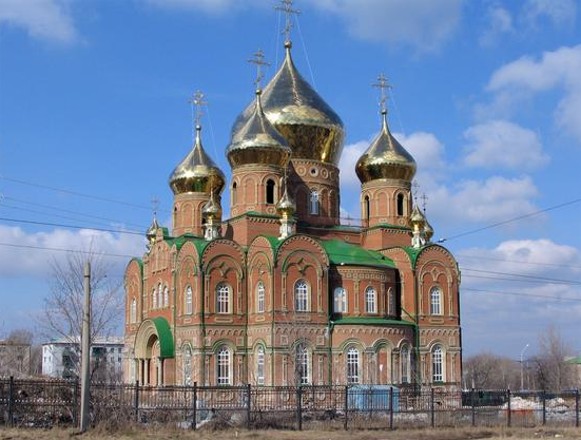
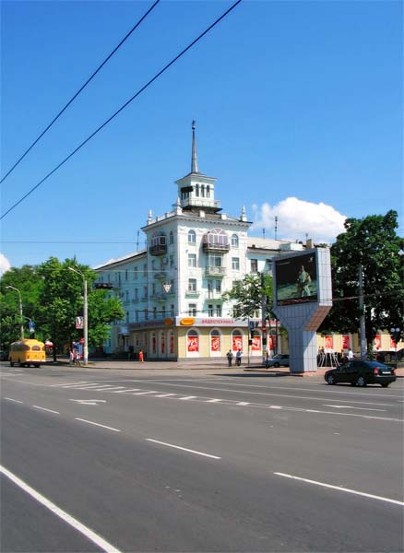
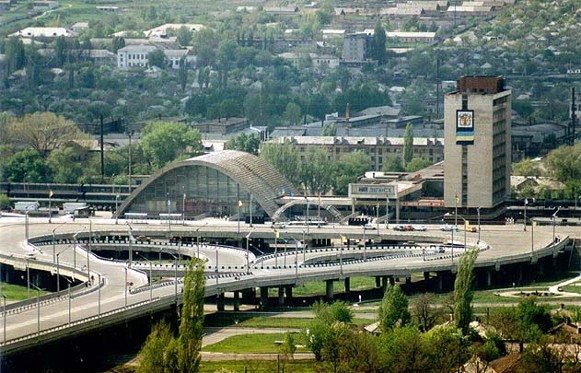
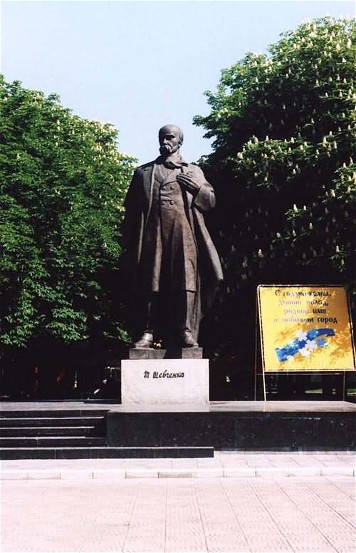
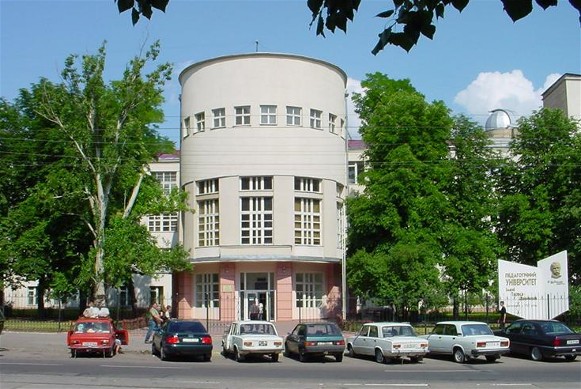
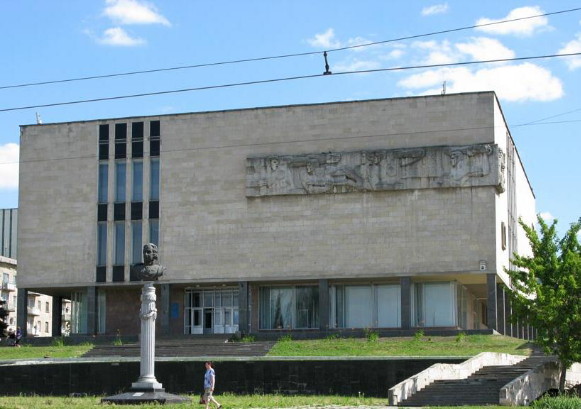
.jpg)